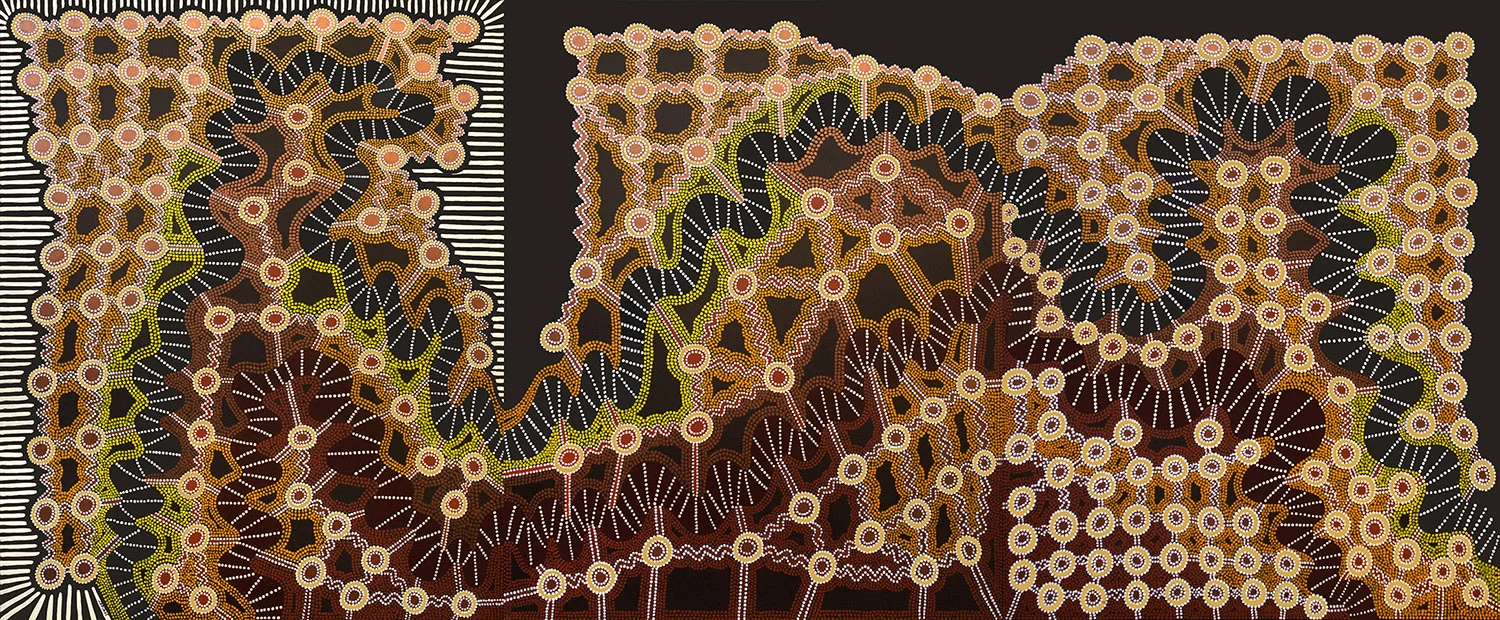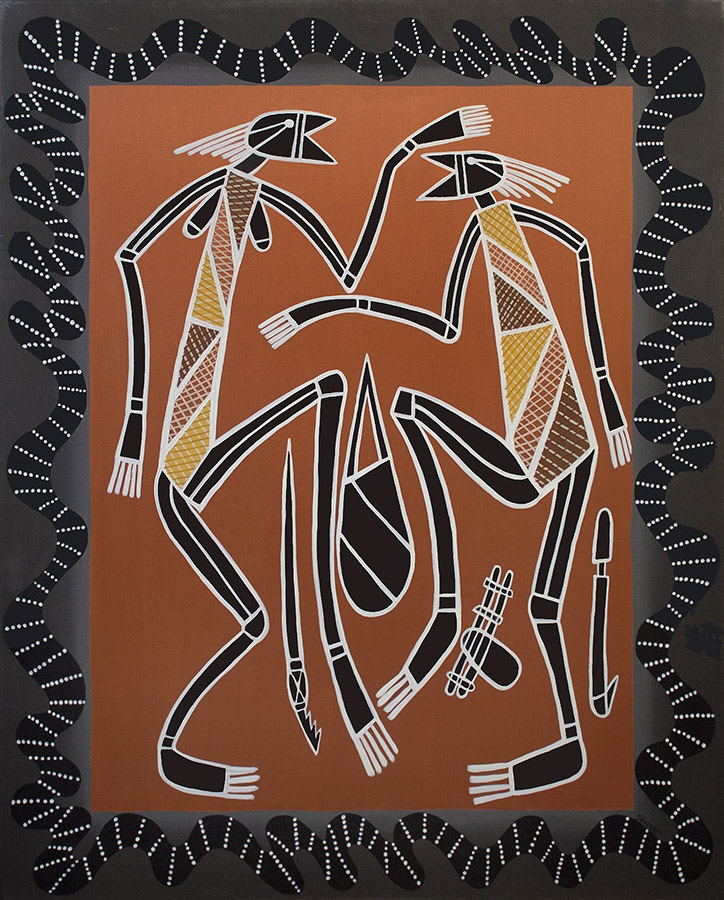ZEN DOT ENERGY
The Chi Energy of the Seven Chakras
An extended art meditation directed by a teacher of the Kabbalah opened up a new dimension in my work. The intuitive transformation that I experienced lead directly to the series: Zen Dot Energy. In this series, dots, circles, and chakras, the seven energy centers of the human body in the ancient Indian tradition, create fields of pulsating visual excitation. The chakras reveal a unity between human existence and the structure of the universe. These paintings use pointillism in conjunction with circles and chakras, to create powerful imagery drawn from primitive cultures such as African, Asian, and Aboriginal.
The obsessive detailing of these paintings emanates an electric energy that is universally understood and can be felt across cultural boundaries. The use of pointillism, scale shift, color harmony and spatial involution all give the viewer a sense of hallucinatory vibration. These works sustain the eye and mind because they seem to be in a continuous state of generative unfolding. This vibrational effect of illusory movement refers to the mind de-regulated and de-conditioned from western logos and its strictures, which depending on its viewer, can deliver a sense of liberation.
These paintings have their sources in my own life experiences, including my connection to the art of ancient cultures and my personal path of spiritual self-discovery. It is my belief that while we mostly live in our conscious thoughts, we remain largely unaware of the depths of the unconscious and the spiritual dimension of our own being. These paintings are a way to access a sense of that deeper level of our inner selves.
Zen Dot Energy deploys a grand disruption of spatial orientation, disjunction in scale, vibration via pointillism and vivid color combinations and tonalities. These works are culturally and politically relevant in that they aim to invoke sensitivity and awareness to the nuances separating perceptions of order from disorder, structure from void, and Western from non-Western.
Click here to read an essay by D.F. Colman, art historian and writer.





































